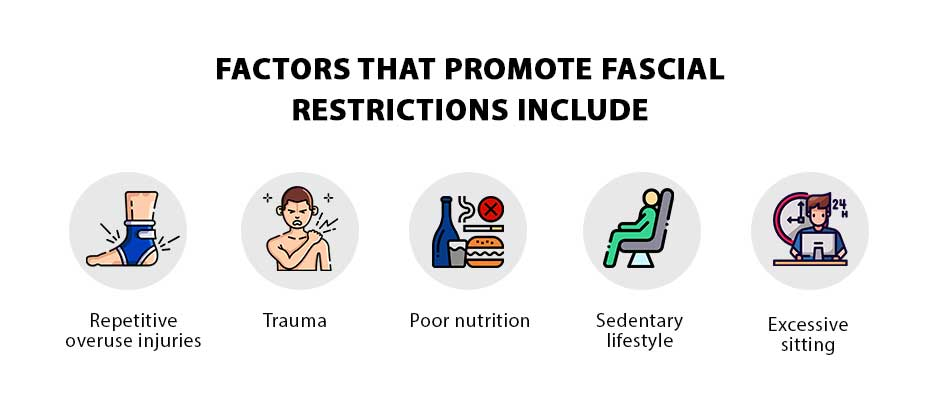
Most of us take our ability to move without pain or disability for granted. But some people inherit soft tissue disorders that restrict their mobility and place them at a high risk for falls and injuries. Heritable disorders of connective tissue (HDCT) is an umbrella term that covers a broad but rare spectrum of soft tissue disorders.
Physical therapy can help patients with abnormal connective tissue to develop coping strategies, to optimize mobility and minimize injuries. Fascia manipulation therapy can help free up restricted fascia, a common problem in HDCT.
Connective tissues are dense bands of tissue made up of mostly collagen. They serve to connect muscles to bones, join bones to other bones, and separate and encase muscles and vital organs, enabling nerves and blood vessels to glide freely, and joints to move without restriction.
Connective tissues play a vital role in stabilizing joints, limiting their mobility within a functional range of motion. Unstable joints dramatically increase the risk of falls and injuries.
Patients born with HDCT experience mutations in the way collagen fibers are arranged in connective tissue, impacting its behavior. This can lead to laxity in ligaments that surround joints, undermining joint stability, impairing movement and interfering with other body structures and systems.
The spectrum of HDCT disorders includes:
Marfan syndrome, a disorder that affects the heart, eyes, blood vessels, and bones of tall, thin individuals
Osteogenesis imperfecta, a rare disorders characterized by fragile bones that break easily
Ehlers-Danlos syndrome, a connective tissue disorder marked by hyper-mobile joints, hyperextensibility of the skin, and fragile soft tissues

Fascia is a type of connective tissue that provides a tough, thin sheath that encases muscles and holds the body’s structures in place. Fascia provides a structural architecture for organs, blood vessels, bones, nerves and soft tissues, holding everything in place. Fascia is highly innervated, making it sensitive to stress, which causes it to tighten up in response to threatening stimuli.
In order to function properly, fascia needs to glide freely among other structures. Its ability to glide is dependent on hyaluronic acid, a key component distributed between collagen layers in healthy fascia. When hyaluronic acid dries up and becomes dense and sticky, or when mutations in collagen exist that disrupt the deposition of hyaluronic acid, fascia movement becomes restricted.
Factors that promote fascial restrictions include:
Repetitive overuse injuries
Trauma
Poor nutrition that limits hyaluronic acid synthesis
Sedentary lifestyle
Excessive sitting

In patients with HDCT, fascia tissue is much more distensible and sensitive to stress, exacerbating its restrictive response. Keeping the fascia supple and free of restrictions is key to optimizing movement. In addition to physical therapy that promotes fascia gliding, fascia restrictions can be manipulated directly. Ultrasound guidance can enhance the success of fascia manipulation therapy.
Treatment options for HDCT fascial restriction include:
Ultrasound guided dry needling, a procedure to eliminate trigger points, tiny knots of muscle fibers that arise in response to tissue stress.
Stecco method fascial manipulation therapy, to relax and free up restricted fascia
Fascial hydrodissection, a technique that separates fascia from adhesions and scar tissue
In a city that never stops, mobility limitations profoundly impact your quality of life. If you suffer from HDCT, optimizing your mobility is key. The human movement specialists at NYDNRehab can help you develop movement strategies that minimize your injury risk and let you move with confidence. Our expertise in fascia therapy can help prevent restrictions through fascial manipulation, dry needling and fascia hydrodissection. Contact us today, and get moving again without pain or limitations.
Dr. Lev Kalika is a world-recognized expert in musculoskeletal medicine. with 20+ years of clinical experience in diagnostic musculoskeletal ultrasonography, rehabilitative sports medicine and conservative orthopedics. In addition to operating his clinical practice in Manhattan, he regularly publishes peer-reviewed research on ultrasound-guided therapies and procedures. He serves as a peer reviewer for Springer Nature.
Dr. Kalika is an esteemed member of multiple professional organizations, including: